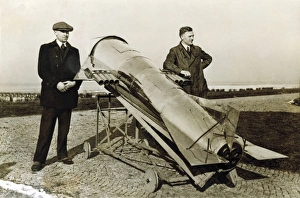Solid Fuel Collection
From the pioneering work of R.H
All Professionally Made to Order for Quick Shipping
From the pioneering work of R.H. Goddard and his solid fuel rocket nozzle in 1918, to the peat excavation and drying processes in NCB's solid fuel promotion of 1967, it has played a pivotal role in the history of rocket technology. Michael Walters' artwork captures the essence of this period, as workers transformed raw materials into fuel for the roaring fires of rockets. The tiling rocket of 1932 and Zucker rocket of 1933 showcase the evolution rocket design, while the German rocket cars of 1928 offer a glimpse into the land-based applications of this versatile fuel. Solid fuel's enduring legacy continues to propel us forward in the realm of space exploration and beyond.







